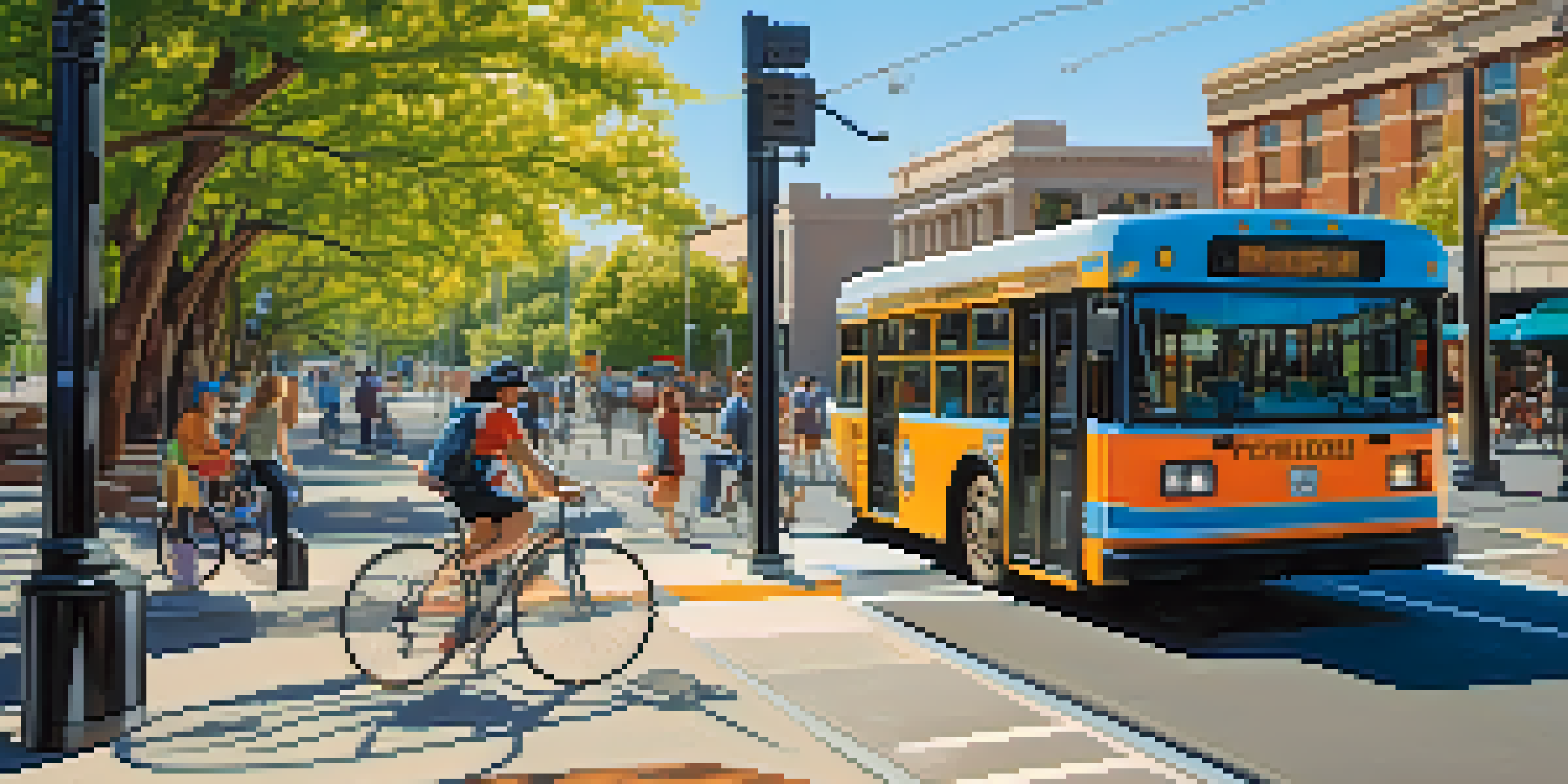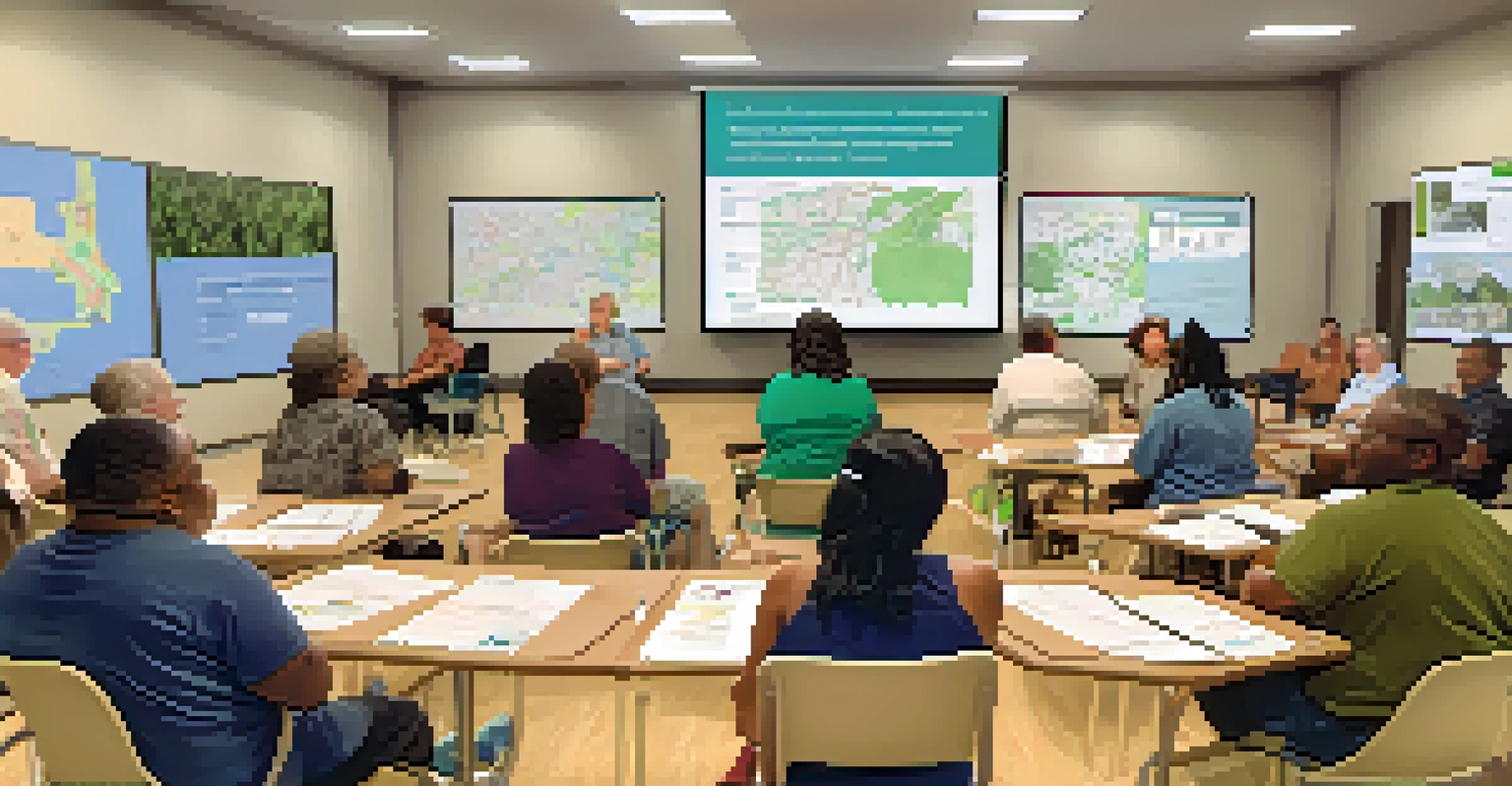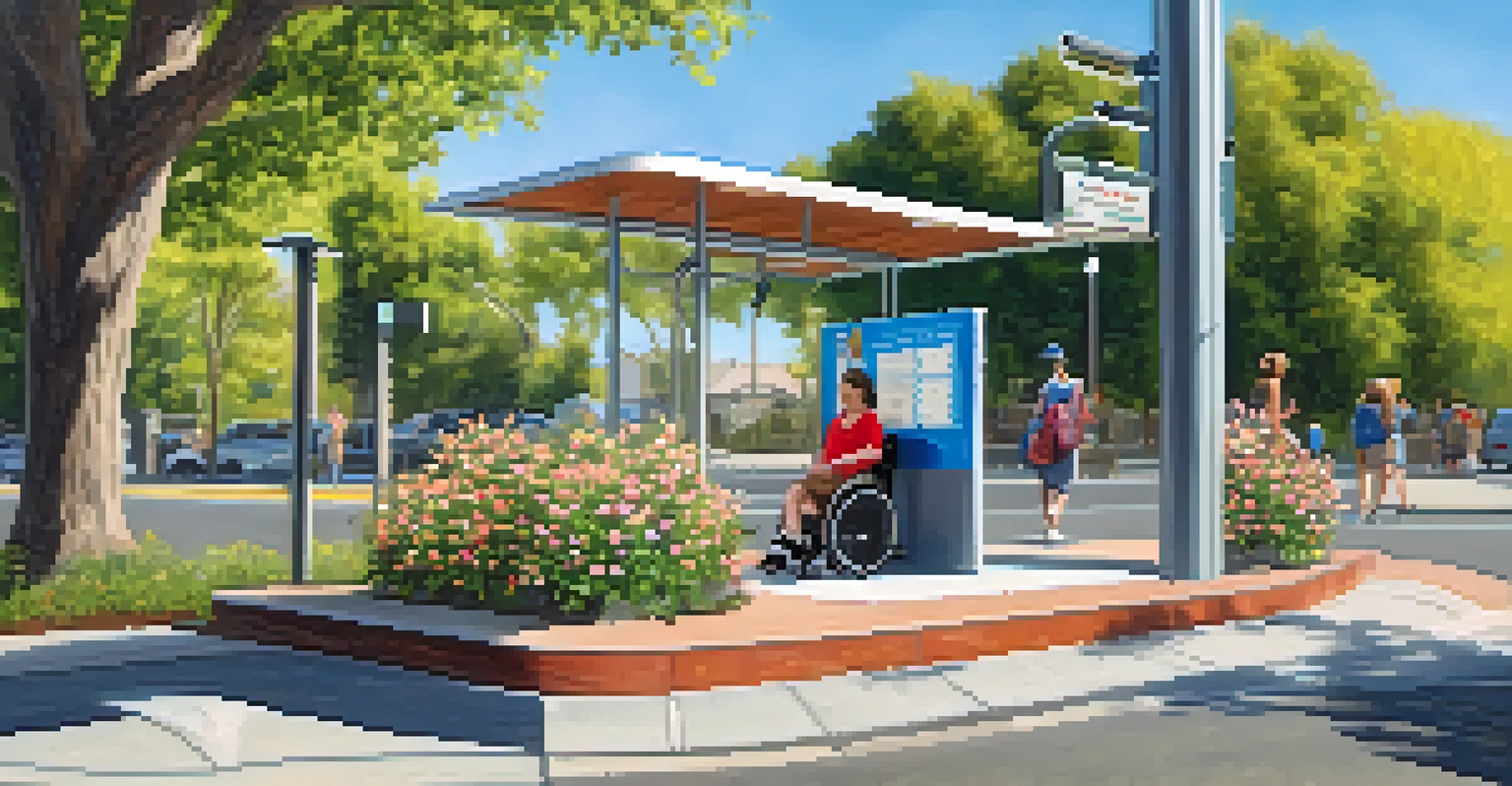Access to Transportation: Equity and Inclusion in Sacramento

Understanding Transportation Equity in Sacramento
Transportation equity refers to fair access to transportation options for all individuals, regardless of their socioeconomic status. In Sacramento, this means ensuring that public transit, biking, and walking paths are accessible and affordable. The city’s diverse population makes it essential to address the unique needs of different communities to foster inclusion.
Transportation is the linchpin of economic mobility, and without equitable access to transportation, many are left behind.
Many residents rely on public transportation to reach jobs, schools, and healthcare facilities. However, barriers such as limited routes and schedules can hinder access, particularly for low-income families and individuals with disabilities. Recognizing these challenges is the first step toward creating a more equitable transportation system.
By understanding transportation equity, we can identify gaps in services and advocate for changes that benefit all residents of Sacramento. This includes improving infrastructure, expanding transit options, and ensuring that marginalized communities have a voice in transportation planning.
Current State of Transportation Access in Sacramento
Currently, Sacramento has a mix of transportation options, including buses, light rail, and bike lanes. However, not all neighborhoods have equal access to these services, leading to disparities in mobility. Areas with high poverty rates often experience limited public transit coverage, making it difficult for residents to travel efficiently.

For instance, residents living in suburban areas might find that the nearest bus stop is miles away, forcing them to rely on personal vehicles or expensive rideshare services. This lack of access can impact employment opportunities, education, and overall quality of life. Understanding these challenges highlights the need for targeted improvements.
Transportation Equity is Essential
Ensuring fair access to transportation options for all Sacramento residents is crucial for fostering inclusion and addressing diverse community needs.
Addressing the current state of transportation access involves gathering data, listening to community feedback, and prioritizing enhancements in underserved areas. By doing so, Sacramento can work toward a more inclusive transportation landscape that benefits everyone.
The Role of Community Engagement in Transportation Planning
Community engagement is vital in shaping transportation policies that reflect the needs of all Sacramento residents. Involving community members in discussions and decision-making processes ensures that diverse perspectives are considered. This grassroots approach can lead to more effective and equitable solutions.
The greatest challenge in transportation planning is ensuring that all voices are heard, especially those from marginalized communities.
Public meetings, surveys, and workshops are great ways to gather input from residents. For example, when planning new transit routes, it's essential to hear from those who will use the services daily. Engaging with marginalized communities helps identify specific barriers they face and encourages collaboration on potential solutions.
Ultimately, community engagement fosters a sense of ownership and accountability among residents. When people feel their voices are heard, they are more likely to support transportation initiatives that promote equity and inclusion.
Innovative Solutions for Improving Transportation Access
To enhance transportation access in Sacramento, innovative solutions are essential. One approach is the implementation of on-demand transit services, which can adjust routes based on real-time demand. This flexibility can help serve areas that are currently underserved by traditional public transport systems.
Additionally, partnerships with rideshare companies can provide low-cost options for residents in need. For example, programs that offer subsidized rides for low-income individuals can bridge gaps in public transportation, ensuring that everyone has access to essential services. Such collaborations can significantly improve mobility for vulnerable populations.
Community Engagement Drives Change
Involving community members in transportation planning helps identify specific barriers and leads to more effective and equitable solutions.
Exploring technology-driven solutions, like mobile apps that provide real-time transit information, can also empower residents to make informed travel decisions. By investing in innovative approaches, Sacramento can create a transportation network that is not only efficient but also equitable.
Addressing Barriers for People with Disabilities
Transportation access for people with disabilities is a critical aspect of equity in Sacramento. Many public transit options lack the necessary accommodations, such as wheelchair-accessible vehicles and adequate support services. Identifying and addressing these barriers is crucial to creating an inclusive transportation system.
For instance, implementing training programs for transit staff on disability awareness can improve the overall experience for passengers with special needs. Additionally, investing in accessible infrastructure, like curb cuts and tactile guidance systems, can make navigating the city easier for everyone. These modifications promote independence and mobility for individuals with disabilities.
By prioritizing accessibility, Sacramento can ensure that all residents, regardless of their physical abilities, can participate fully in their communities. This commitment to inclusivity not only benefits individuals with disabilities but enriches the entire city.
The Impact of Transportation Access on Economic Mobility
Transportation access plays a significant role in economic mobility, particularly for low-income families in Sacramento. Reliable transit options can connect individuals to job opportunities, education, and essential services. When transportation barriers are removed, residents can pursue better employment and improve their overall quality of life.
For example, a single mother living in a transit desert may struggle to reach her job or childcare provider, limiting her ability to work. By enhancing public transportation routes and services in these areas, Sacramento can help families break the cycle of poverty and achieve greater economic stability. This foundational change can lead to long-term benefits for both individuals and the community as a whole.
Access Boosts Economic Mobility
Improving transportation access can significantly enhance economic mobility for low-income families by connecting them to job opportunities and essential services.
Investing in transportation infrastructure is not just an expense; it’s an investment in the future of Sacramento. By prioritizing access, the city can foster an environment where everyone has the opportunity to thrive economically.
Future Directions for Equity in Transportation
Looking ahead, Sacramento has the opportunity to lead by example in transportation equity. Developing comprehensive plans that prioritize underserved communities is essential for sustainable growth. This includes ongoing assessment of current services and listening to resident feedback to adapt to changing needs.
Moreover, collaboration with stakeholders—such as local businesses, advocacy groups, and government agencies—can drive innovative solutions that address transportation challenges. By forming these partnerships, Sacramento can leverage resources and ideas, ensuring that transportation access remains a priority in future planning.

As the city evolves, maintaining a commitment to equity and inclusion in transportation is crucial. This proactive approach can help create a vibrant and accessible city where every resident can fully participate in their community.